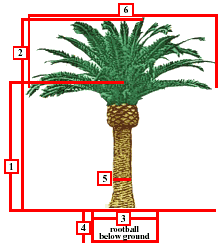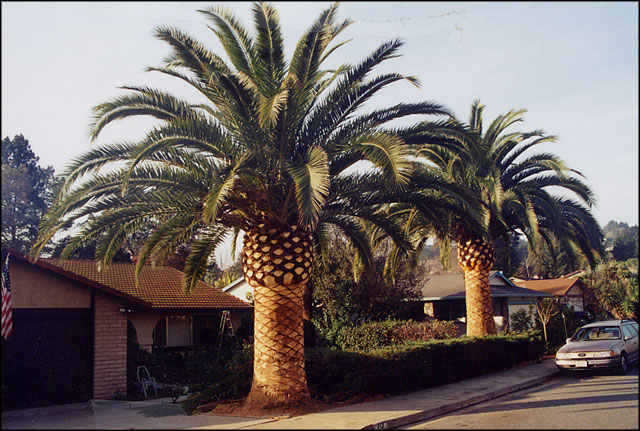We have many Canary Palms that are available for transplant. These trees are all in Northern California and can be visited for approval by the client, designer, or architect. Using locally grown trees is a good investment since they are pre-acclimated to the Northern California climate zone, and generally can be harvested and planted in the same day- only spending several transport hours out of the ground. This greatly reduces the shock experienced by the tree from the transplant when compared to shipping a tree across the state and having it out of the ground for days on end.
Please refer to the detail below for the appropriate sizing of Canary Palms. This detail depicts the very popular Canary Palm (Phoenix canariensis) but can be used for all palm species for the purpose of measuring although the actual measurement of each item will vary depending upon species.

- Brown Trunk Height (BTH) - Nursery Standard Measurement (from grade to the base of the newest emerging spear)
- Overall Height (usually about 10' above BTH)
- Rootball Diameter (usually about 5'-8')
- Rootball Depth (usually 3' to 8')
- Trunk Caliper at 5' (usually 2' to 3')
- Canopy Diameter (usually 22' to 26')
Here are two trees to be removed and relocated after growing too large for their location:

The trees are trimmed prior to transplant. If you order Canary Palms from Golden Gate Palms, you're trees will be similarly trimmed:

